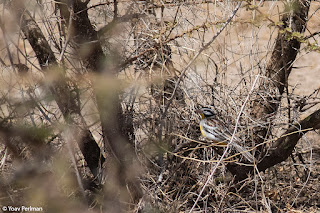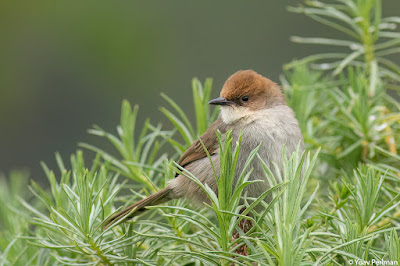Earlier this month I travelled to Kenya, you may have seen that on my social media channels. I travelled with Dan Alon, my boss who is also a close friend, my son Noam and Dan's son, who's name is Noam too. This was a double Bar Mitzva trip - following the welcome tradition of doing a proper trip as part of the Bar Mitzva celebrations.
We flew to Nairobi via Addis Ababa in Ethiopia on July 12th. In previous visits, the latest was in 2010, I enjoyed excellent birding watching out of the terminal windows towards a nice garden. Now the terminal building has been redone, and the large windows look out only towards the rather barren runways. Not too many birds seen during the layover, barely enough for a maintaining a checklist streak. White-collared Pigeon was the only Abyssinian endemic seen.
We landed in Nairobi after a long delay, and discovered that my suitcase was missing, lost somewhere in nether between Tel Aviv and Nairobi. I made a stupid amateur's mistake and packed valuables and important stuff in my suitcase, so I was really upset and anxious for the next few days, fearing I will never see my suitcase again, as it happens to so many travelers worldwide these days. We met up with our guise Simon and left the airport, first stopping in a Nairobi shopping center to get some essentials for my son and I to keep going for a few days. Then it was a long, exhausting drive to Naro Moru where we spent the night.
Next day (July 13th) was dedicated to Mt. Kenya. I have never been to Mt. Kenya before and was looking forward to the climb very much. We were joined by a local guide, Charles, who actually did quite a good job. We drove up the mountain to the Meteorological Station, at 3000m ASL, where we started walking up through the lush forest. The forest was beautiful but birding was fairly quiet. Still we saw some nice birds (eBird checklist here). It is a fantastic sensation for me to be in a new zone where quickly I need to learn new bird calls - so exciting and challenging.
Tree Hyrax
Abyssinian Ground-Thrush
Plenty of Kikuyu White-eye
Streaky Seedeater were common
Two Thick-billed Seedeater seen
Hunter's Cisticola became commoner as we climbed up towards the tree line
Eventually we reached the tree line but didn't get very far up the alpine zone as one of the team suffered from altitude sickness. I could see the unique Giant Groundsel plants from a distance. There were giant and beautiful Lobelia deckenii plants demonstrating how special the environment is up there.
I was hoping to see more of the endemic birds of Mt. Kenya, but with the little time and only medium altitude reached I had to make do with distant views of a stunning male Red-tufted Sunbird. Moorland Chat was another alpine bird seen, and a super-cute one.
Overall, from a strict birding POV, my first visit to Mt. Kenya was less than satisfying. I didn't see too many birds, and none of the Mt. Kenya biggest specialties that are higher up than where we reached. Still, it was a most enjoyable introductory visit and first day in Kenya, shared with our group, scenery was beautiful - can't complain. I am sure I will return to Mt. Kenya in the future so no worries.
As is normally the case in Africa, our accommodation at
Naro Moru River Lodge was packed with birds - good fun, though the opportunities to bird there were limited to short walks only. I was far from fulfilling the birding potential of the lush gardens and riparian forest along the small river, still managed Red-bellied Parrots, Red-faced Crombec and many common species.
Not rare but very beautiful - African Paradise-Flycatcher











































